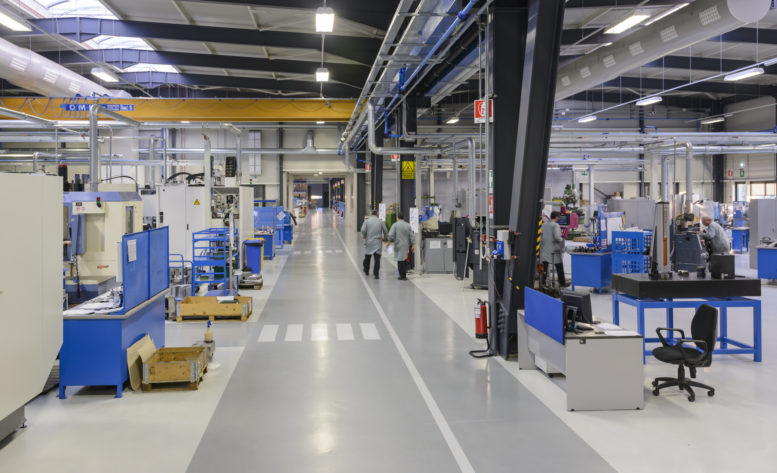By JAN LARSON McLAUGHLIN
BG Independent News
Graduating high school students have long looked at college as the route to financial security and prestige. But more and more, it’s a ticket to great debt and frustrating job searches.
For years, parents have propelled their offspring toward professions needing college degrees.
“That’s where you make money,” said Sue Clark, executive director of the Bowling Green Economic Development Foundation. “But that just isn’t true anymore.”
“Parents want kids to be something other than in manufacturing,” Clark said. But those parental dreams are based on outdated beliefs that industry is hard, dirty work with little reward. Today’s manufacturers are “very high tech, very clean, and very well-paid,” she said.
During her annual report on economic development in Bowling Green, Clark talked about healthy growth in the city. Manufacturing jobs had reached 4,000 – the highest ever in the city. “Our companies keep reinvesting in themselves,” she said. “We now have more employees in the manufacturing sector than the university does.”
But that growth, along with the low 3.7 percent local unemployment rate, poses a problem of its own.
“While I paint a rosy picture, we’re not without our concerns,” Clark said. “Finding good employees is at the top of our list.”
The top complaint from industries in Bowling Green is the lack of skilled trade workers, she said. In fact, some manufacturers have reported that they have been turning down work and foregoing expansions because they cannot find the needed workforce.
“While we are a university town, we still value plumbers, electricians, die makers and machinists,” Clark said.
Some training programs, like union apprentice programs, Penta Career Center and Owens Community College, are responding to the need. But while they are “filling the pipeline,” it’s not solving the problem right now, she said.
One of the Bowling Green industries feeling the pinch of not enough skilled trades people is Rosenboom Machine & Tool Inc., which makes custom hydraulic cylinders.
“I’ve had difficulty finding the skilled positions I need,” said Dee Meyer, head of Rosenboom human resources. The biggest need is for computer numerical control machinists.
The lack of CNC machinists poses two problems. “It keeps us behind in serving our customers,” Meyer said. “And it takes more overtime to get the job done.”
While Meyer said a lot of training programs are responding to the demand, that doesn’t satisfy the immediate issue. “We need the people now,” she said.
Meyer also acknowledged that the Bowling Green plant can’t match the pay at Toledo plants. “We compete with Toledo. Those people are paid a little bit higher wages.”
Down the road, Toledo Molding & Die Inc., is experiencing some of the same shortages in skilled trades. Kelly Lewallen, head of human relations, said she has been unable to find a maintenance technician that meets the company’s needs. Lewallen is looking for people with experience in the automotive industry, who can be the primary troubleshooters for electrical, pneumatics and hydraulics.
“We just have trouble finding them,” she said.
The company is also struggling with a lot of turnover in production operators. The positions pay well and require no experience, Lewallen said, but they require physical labor. “A lot of the young people we hire just don’t seem to want to work.”
Wade Gottschalk, executive director of the Wood County Economic Development Commission, said he has heard similar concerns about skilled positions from manufacturers throughout the county.
“Several have voiced concerns about finding people,” specifically welders, glass workers, general labor and truck drivers, Gottschalk said. “There’s a lot of competition for those skills right now.”
Wood County Administrator Andrew Kalmar said it’s particularly hard to attract and keep skilled trades people if the pay is not competitive.
“If they only pay $10 or $11 an hour, they have trouble keeping them,” Kalmar said. “There’s competition for those people.”
Kalmar said the county has been working with the union trades and Penta to try to direct people toward training programs for skilled labor.
“It’s a great path for someone who doesn’t necessarily want to go to college,” he said.
Mary DeWitt, head of the OhioMeansJobs Wood County Office, also hears from local manufacturers about the lack of qualified people to fill positions.
“We have many manufacturing companies here in Wood County and Northwest Ohio having difficulties finding skilled labor,” she said. The greatest demand is for welders, electricians, maintenance techs (who fix the machines), CNC machinists (who program the machines) and tool and die makers.
“It takes some skill to fill these positions,” DeWitt said.
DeWitt acknowledged that pay rates locally may be part of the problem. “Sometimes the wage doesn’t really match. There’s a disconnect between the manufacturers and the job seekers.”
DeWitt’s office has funding to send local people to training for the skilled positions, and to help companies offset the training costs. Some of the certificate training can be achieved in six to nine months, she said.
“You don’t necessarily need a four-year degree,” she said.
DeWitt agreed that the manufacturing industry suffers from its former reputation.
“I think people picture manufacturing as dirty, dark and dingy,” she said. But in most instances, that is no longer the case. “These are beautiful facilities.”
“Skilled labor and manufacturing are still good jobs to have and pay well,” DeWitt said.

